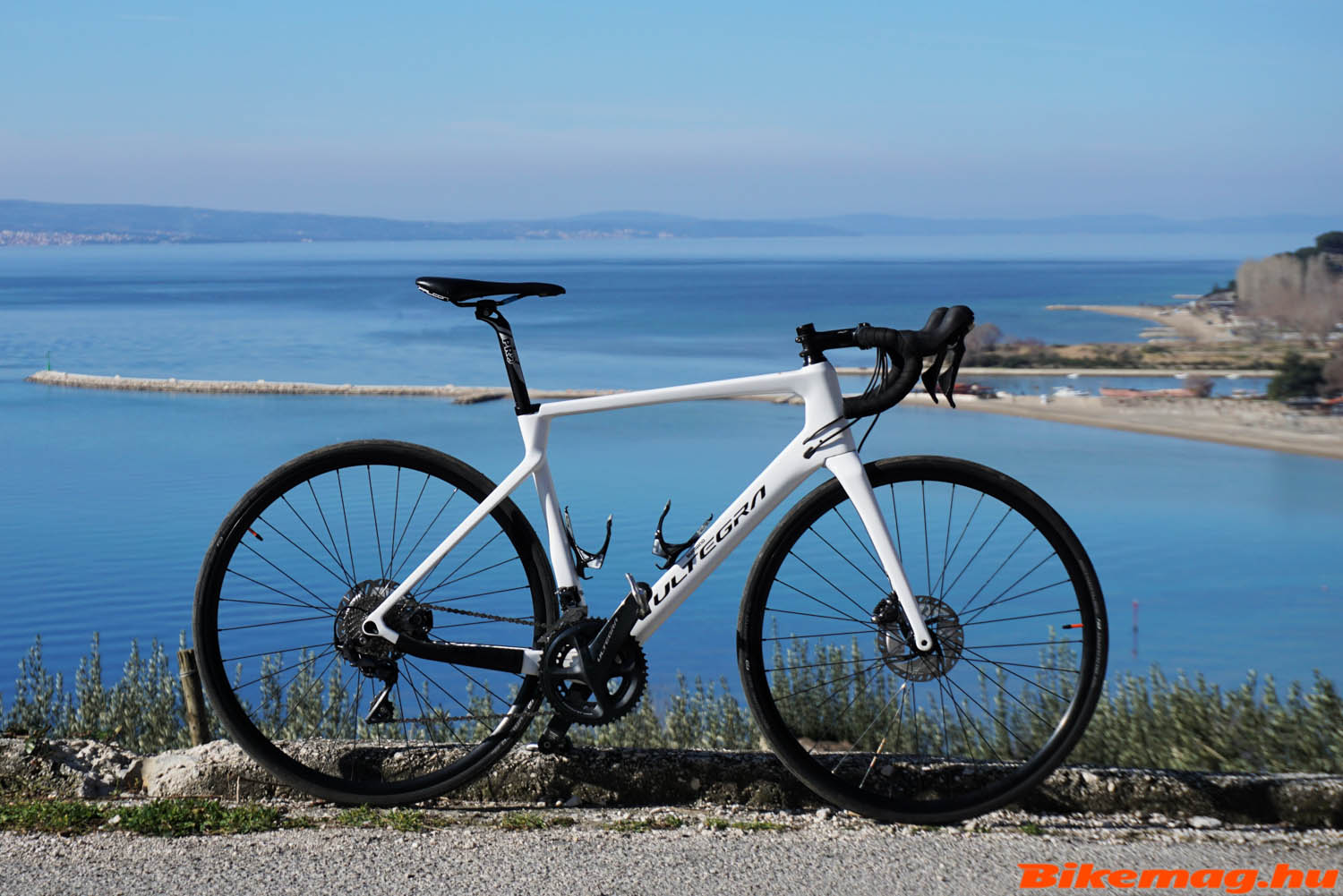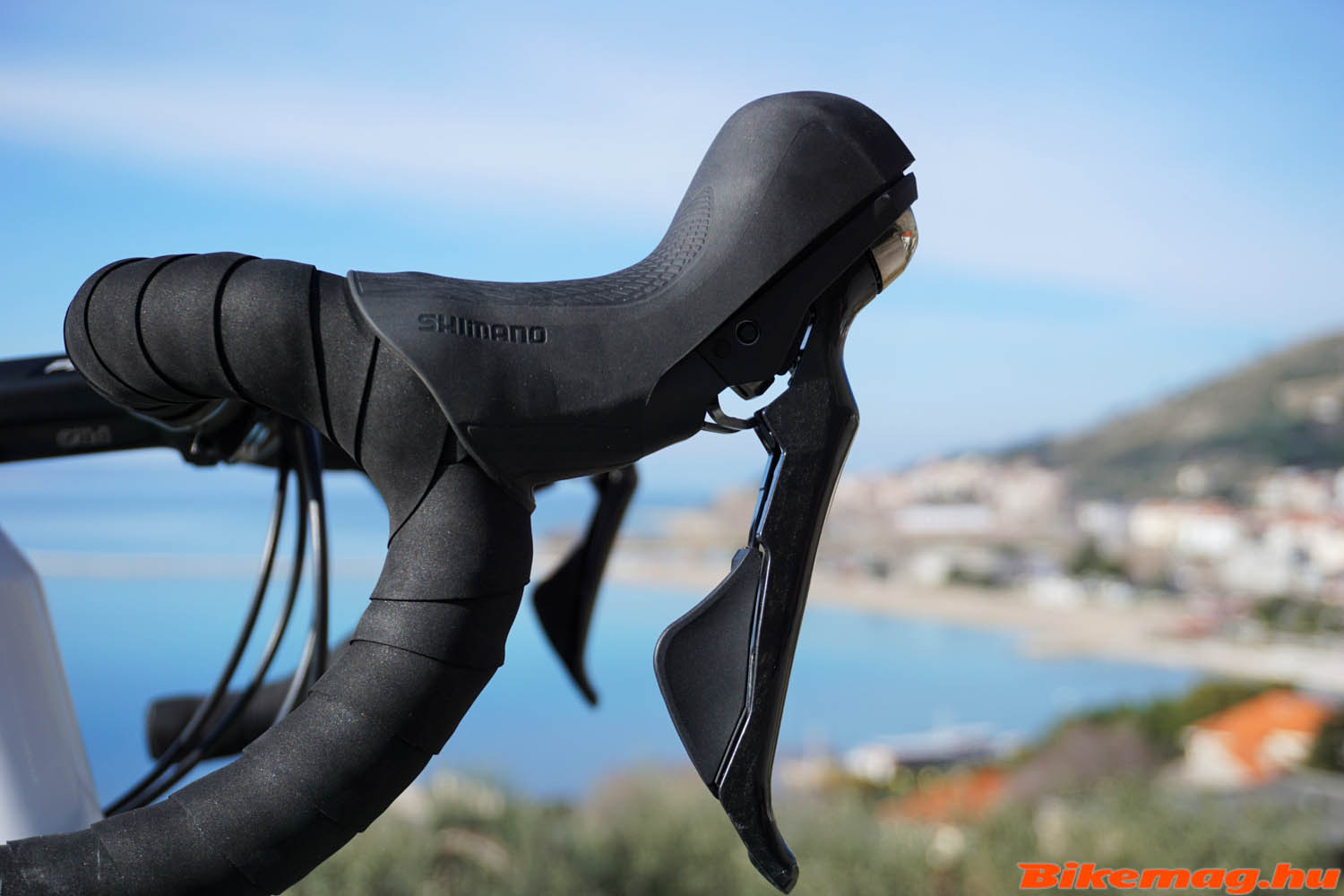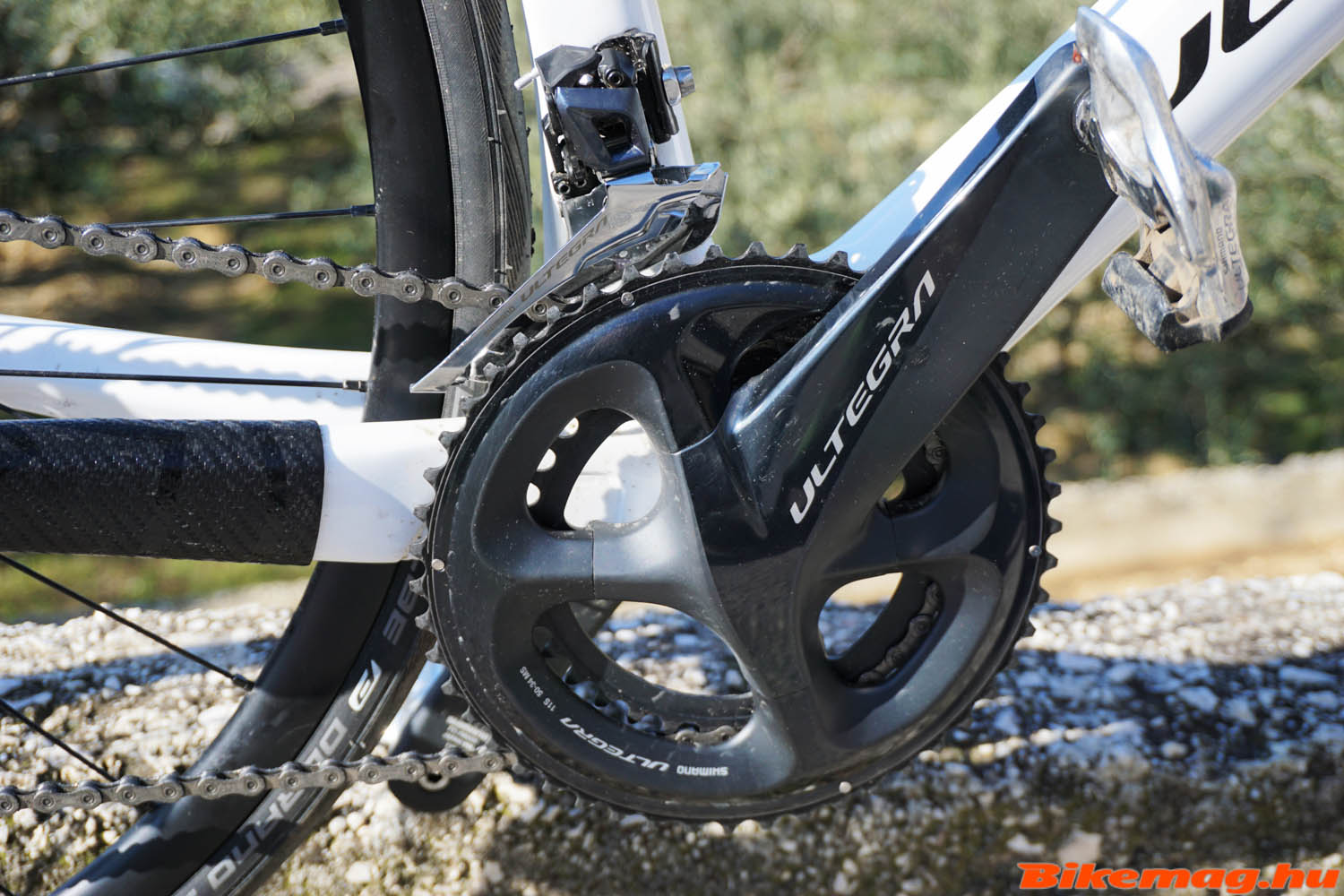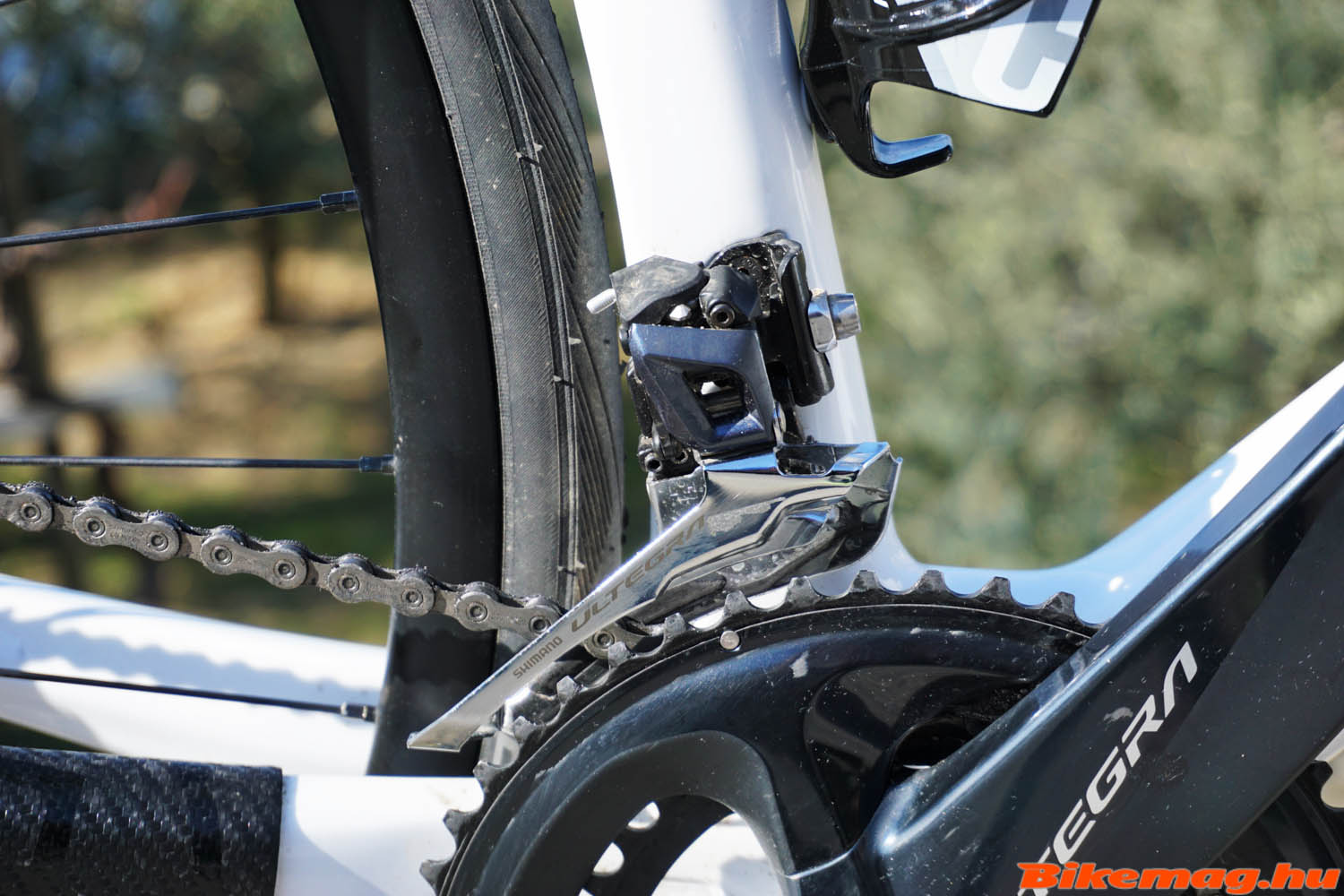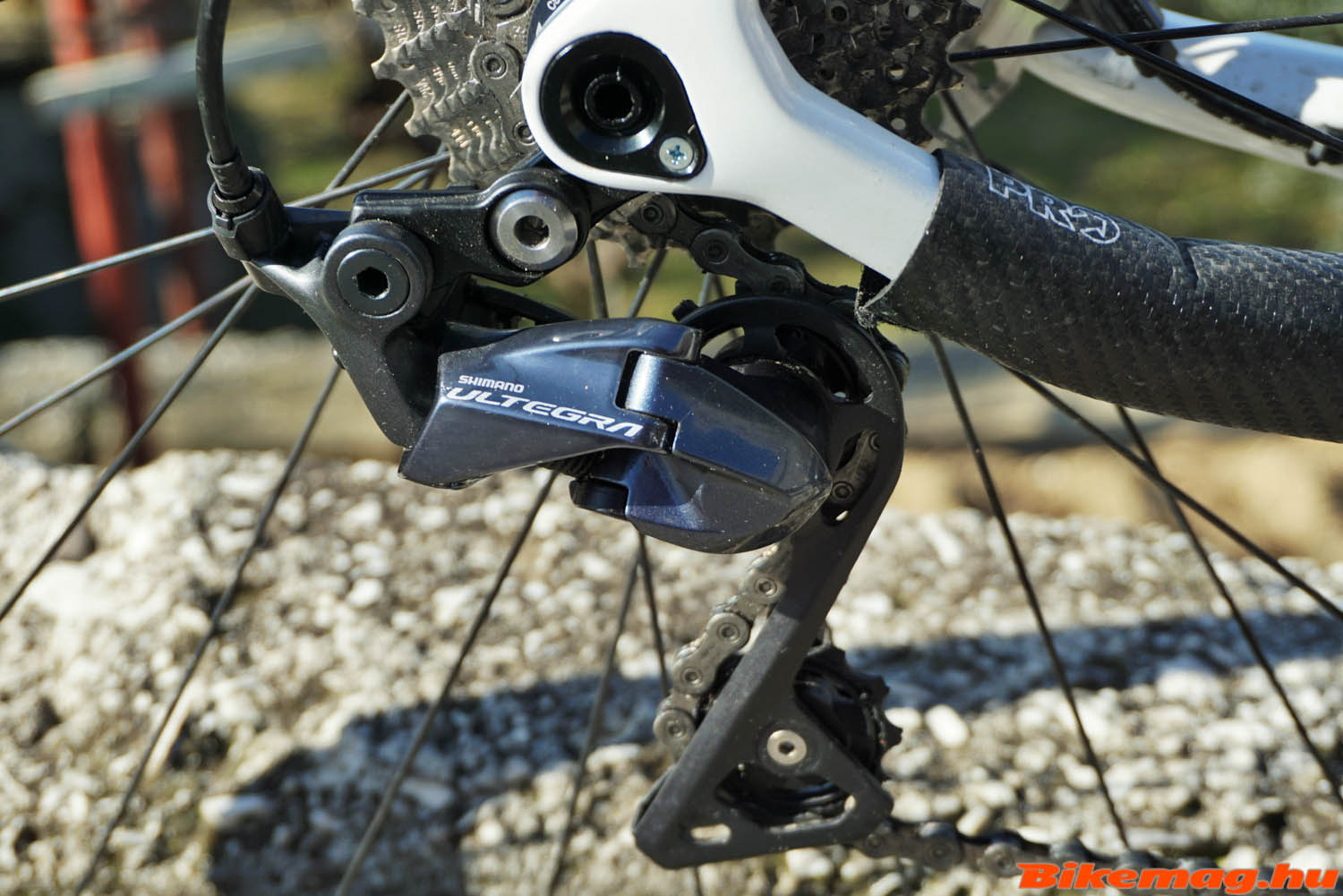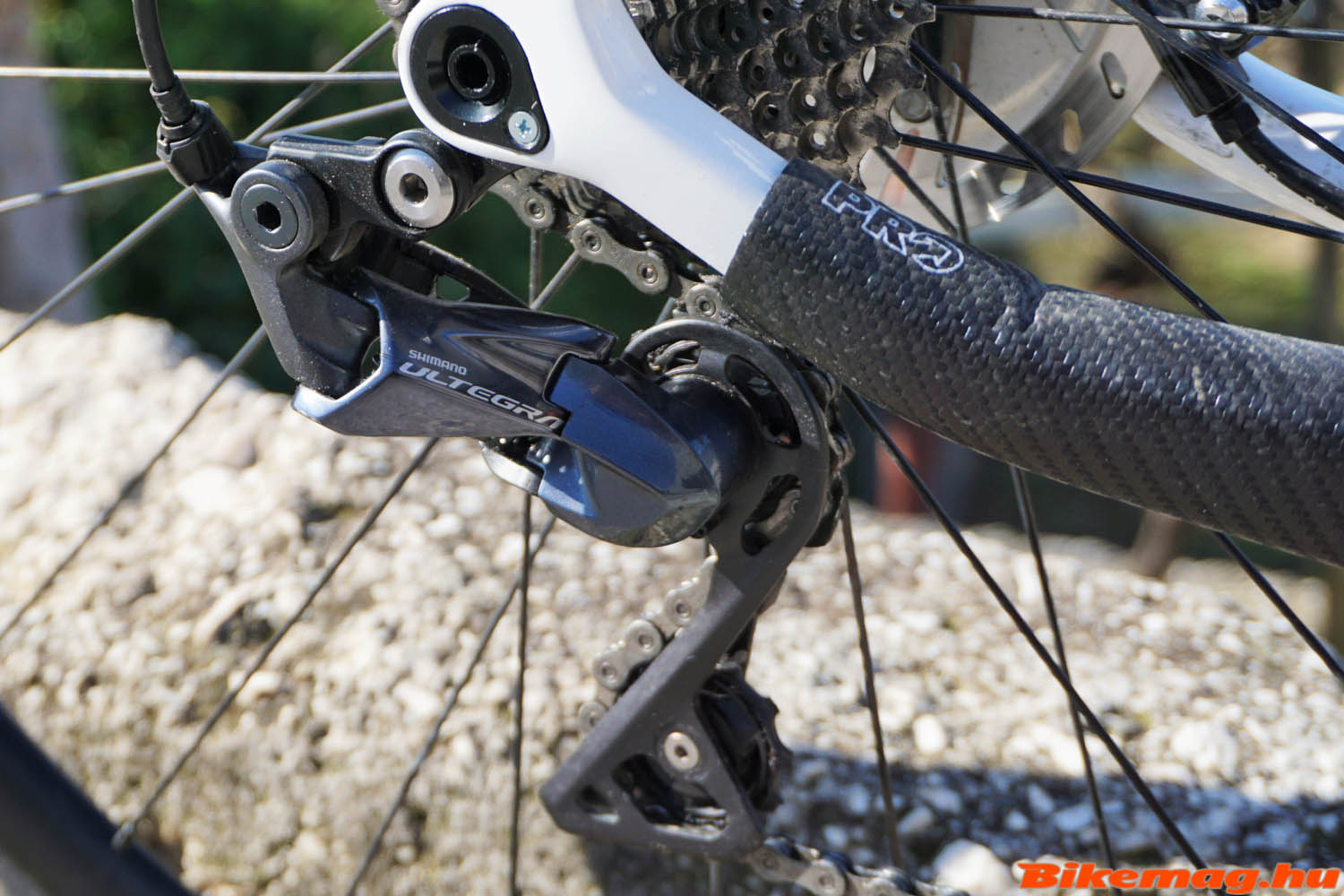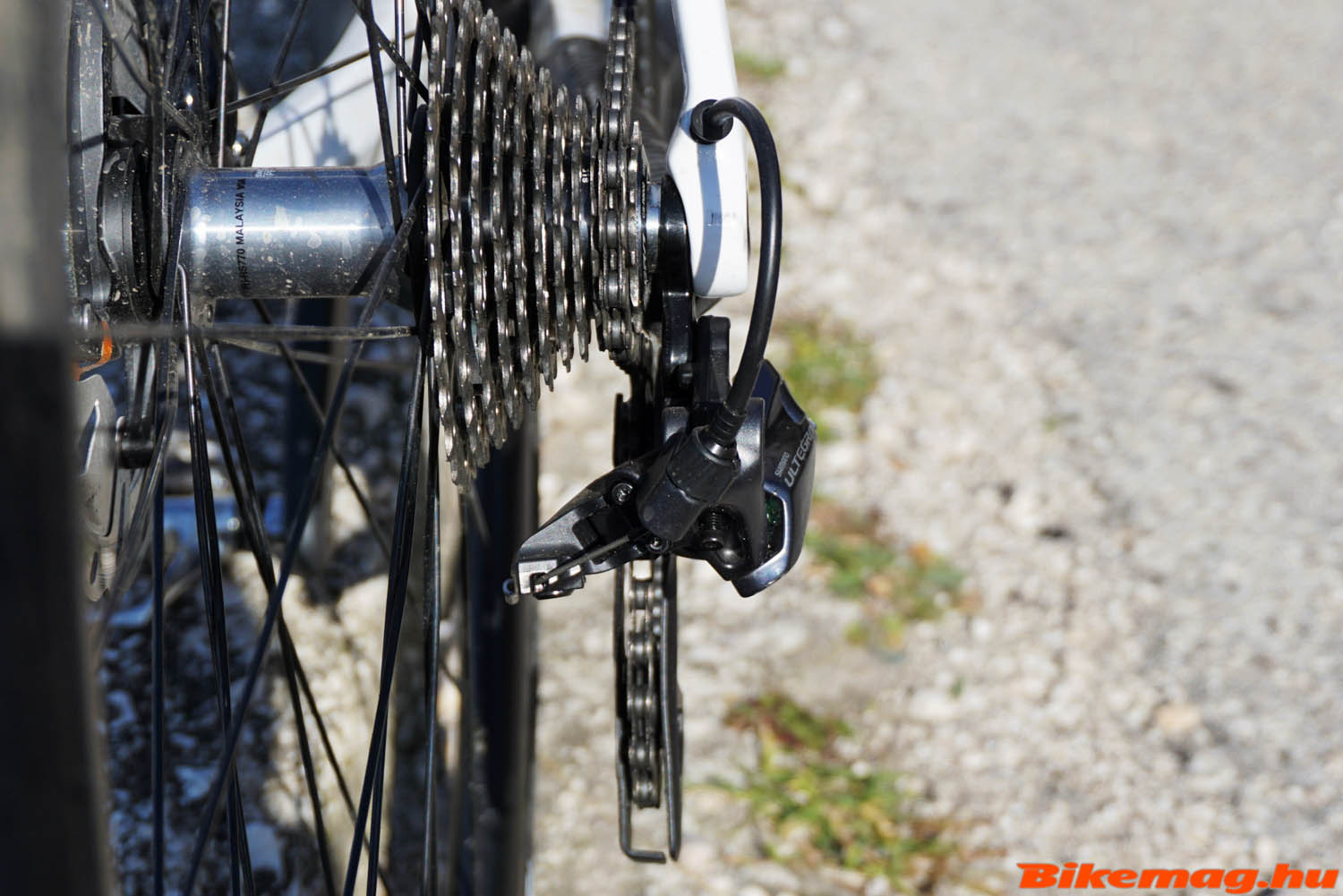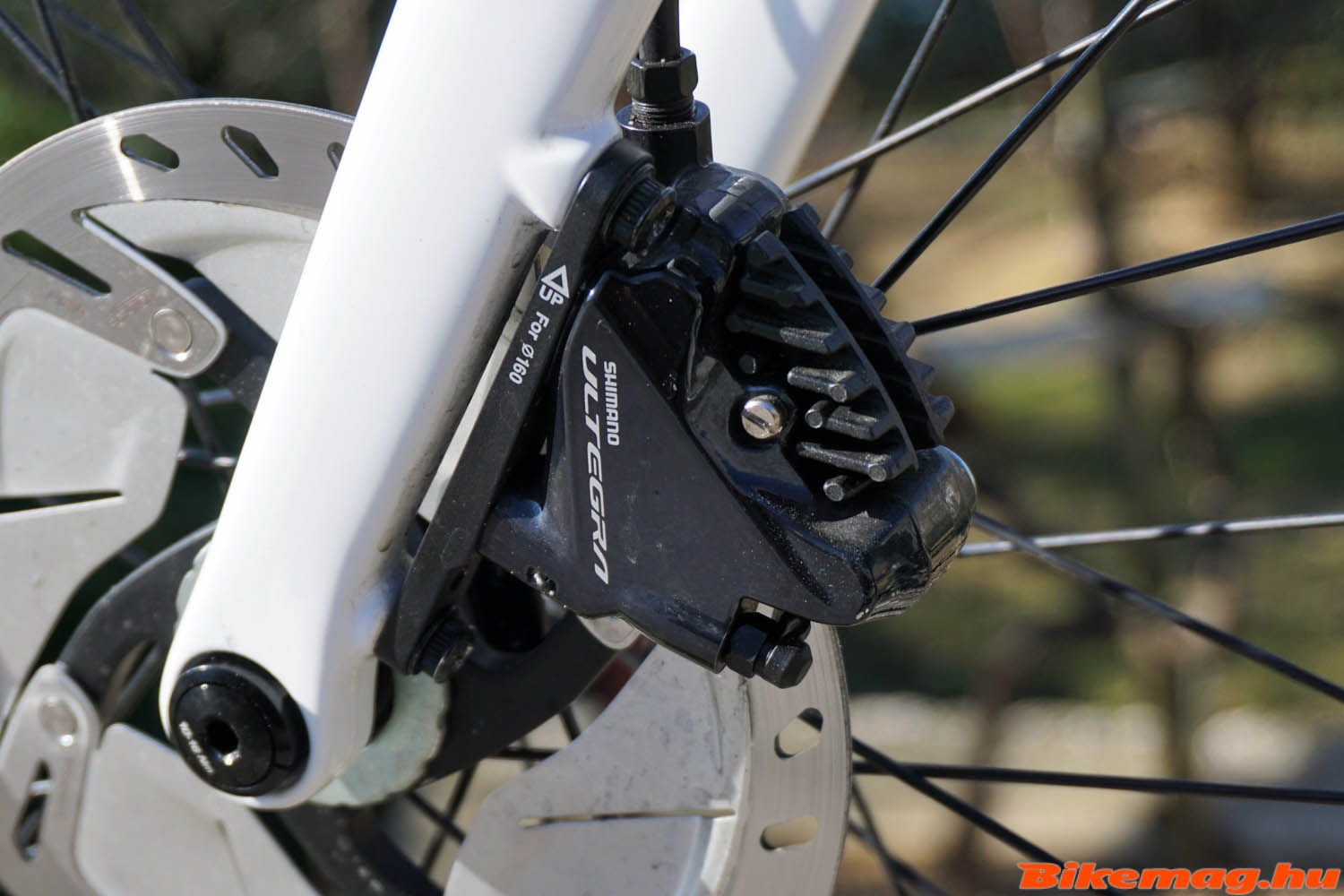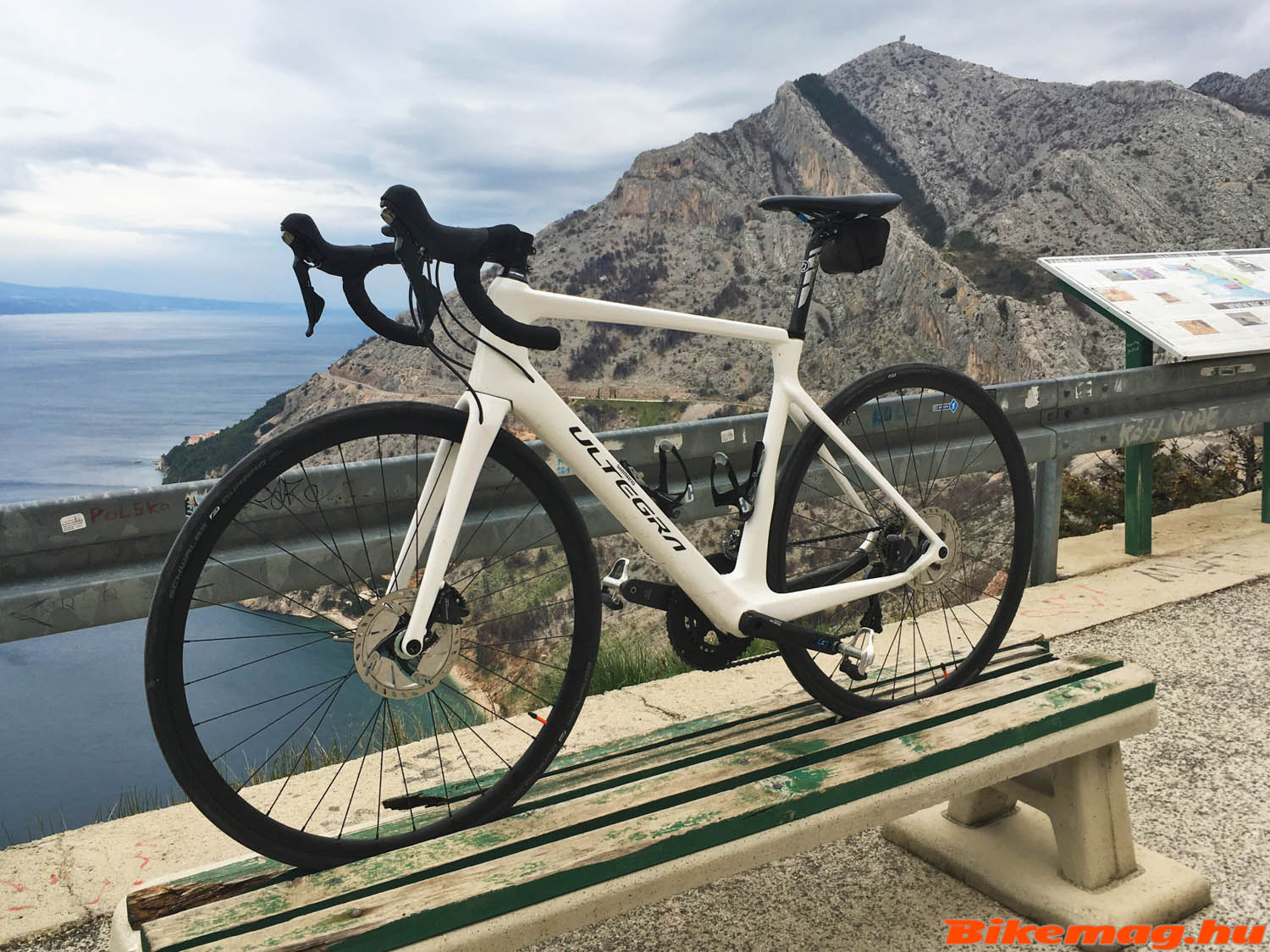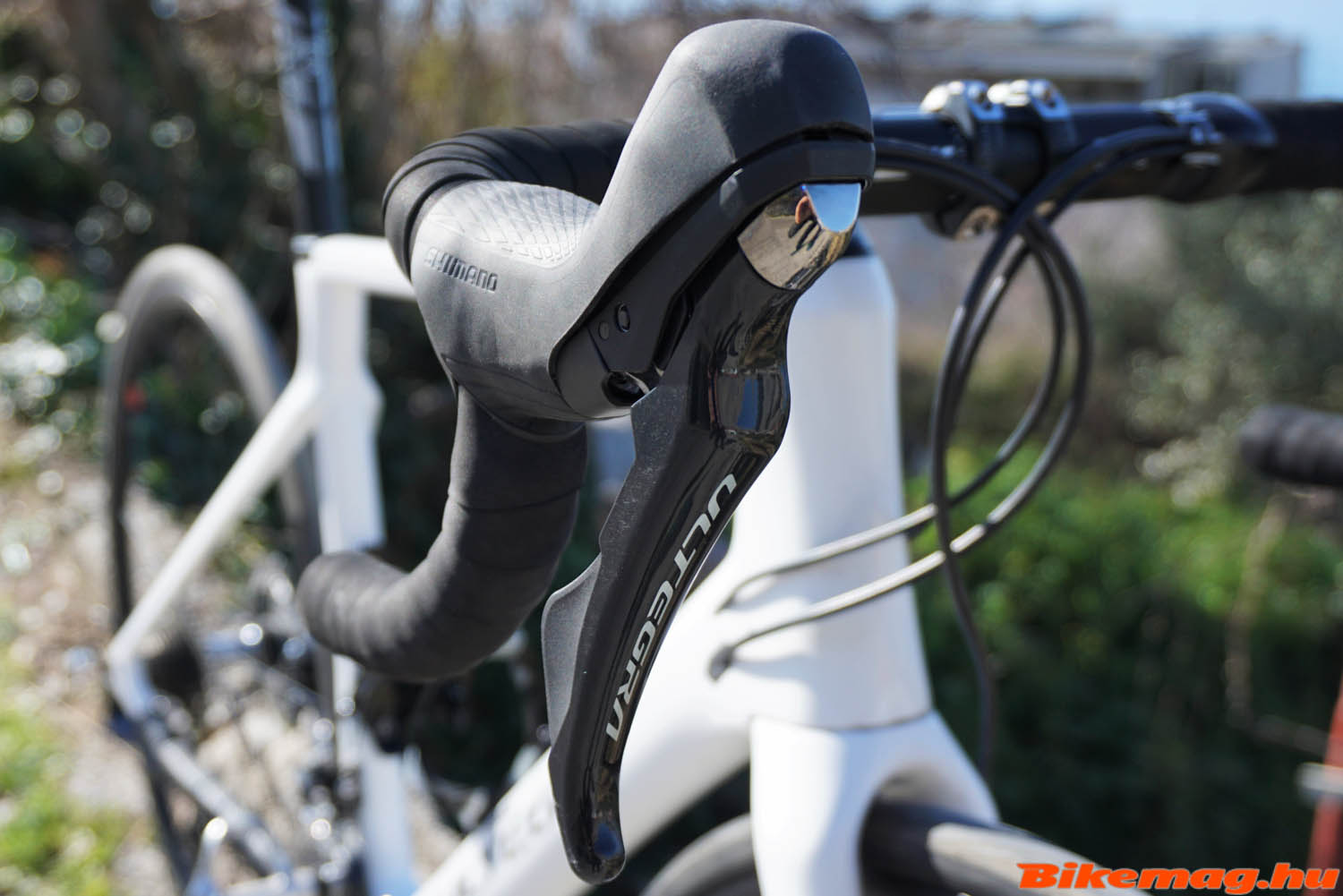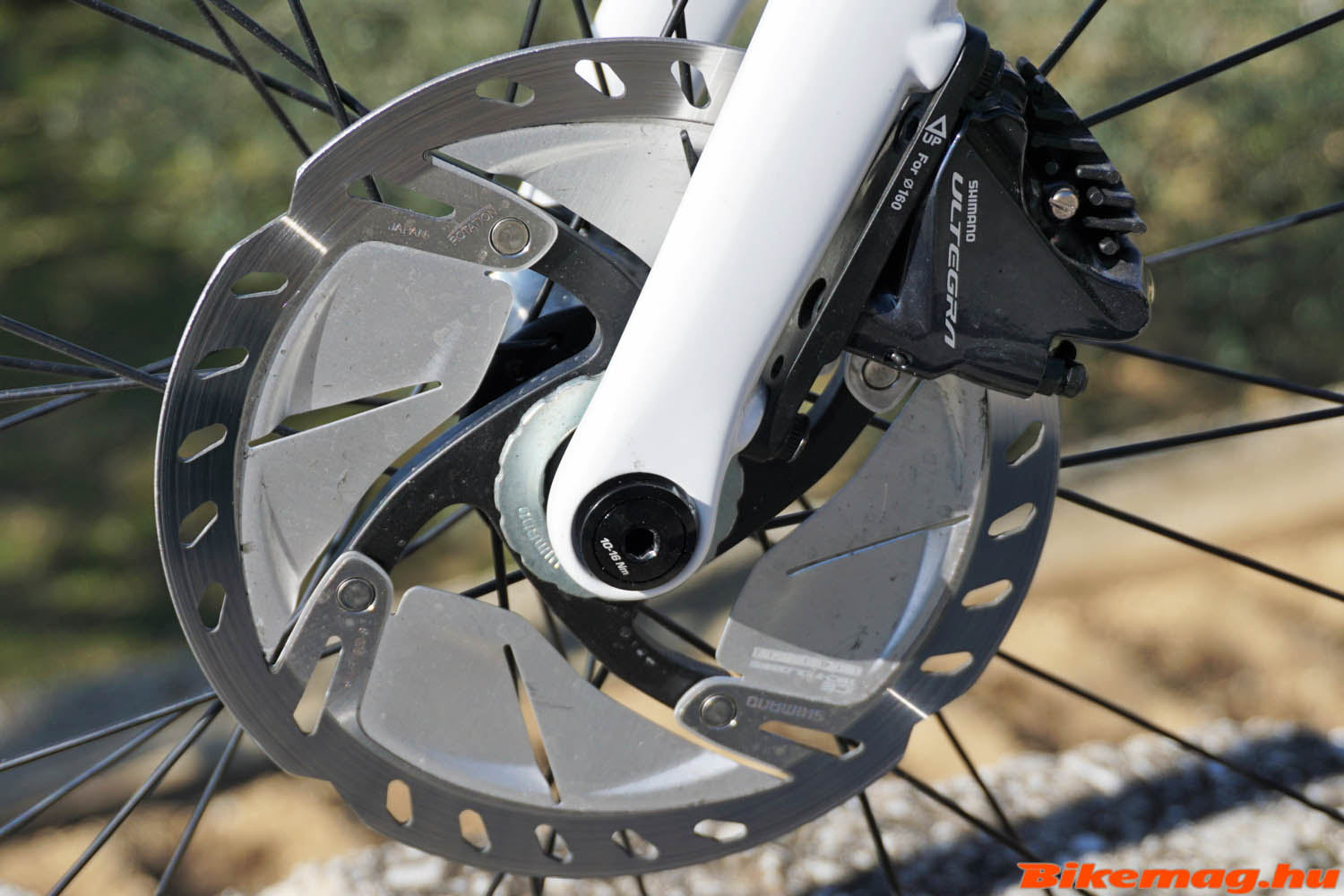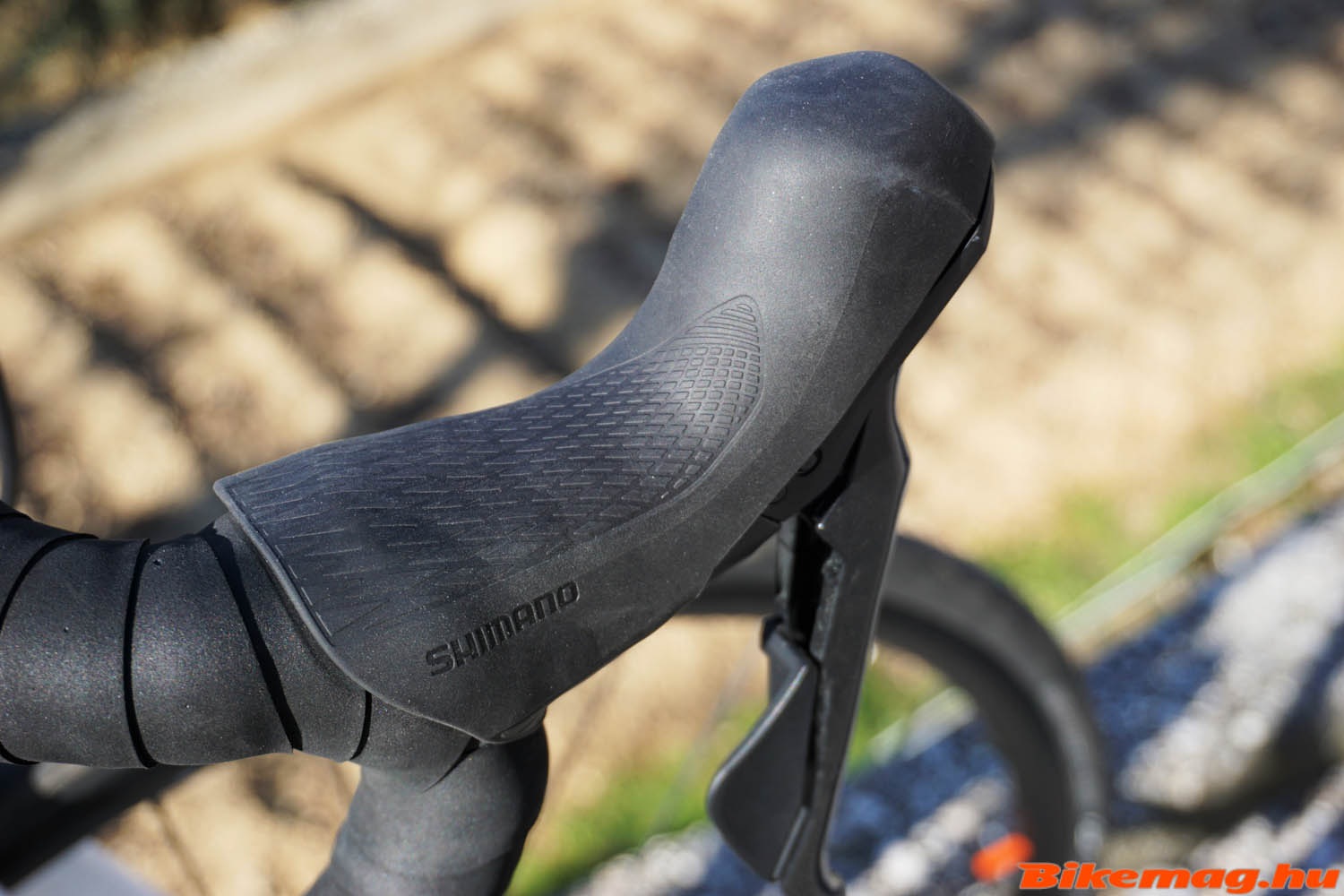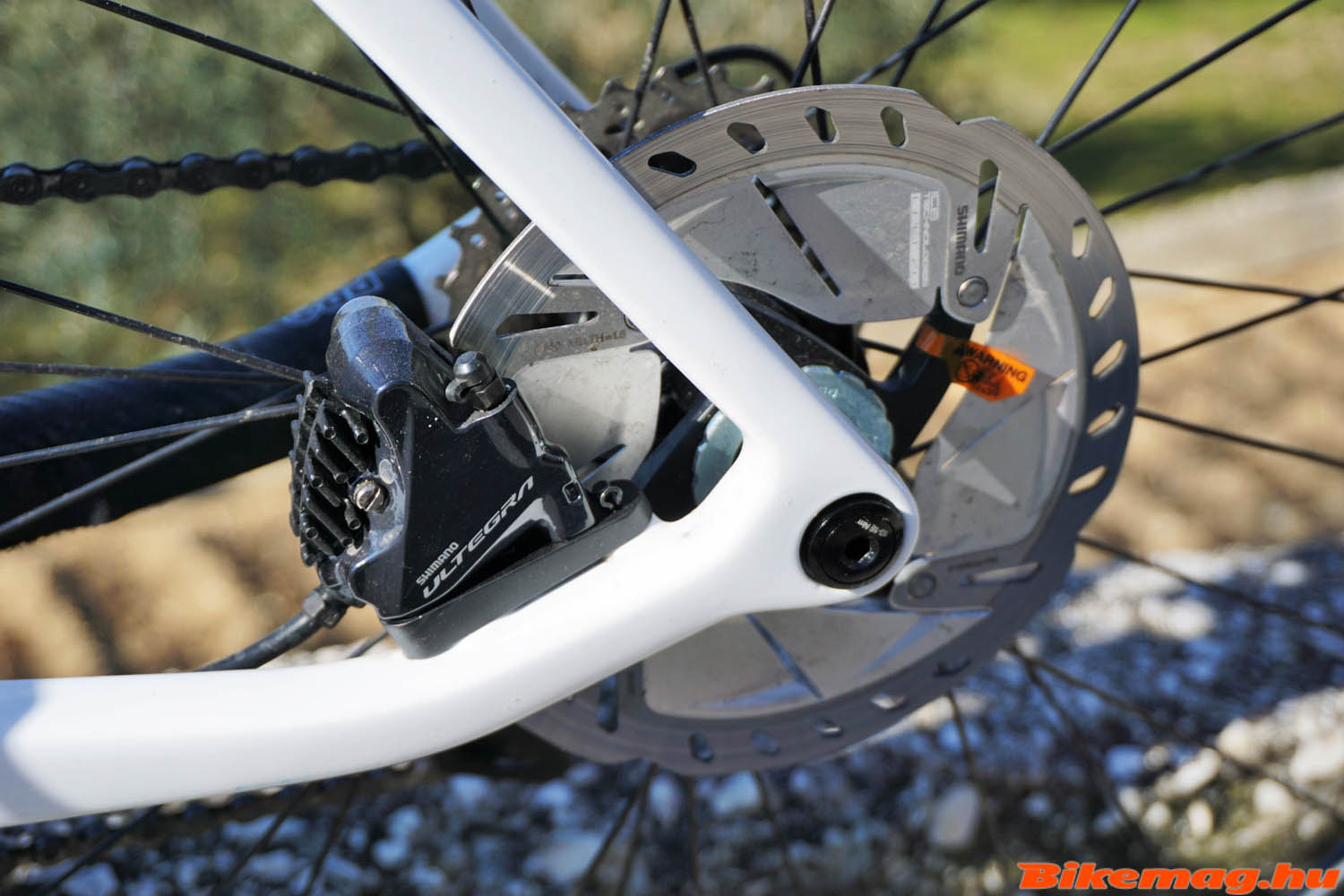Last June, we published an article about the new Ultegra R8000 and R8050 components.
This summer we had the chance to test some of the fresh Ultegra parts on recently introduced 2018 bicycles, but still missed out on a complete hydraulic disc kit. Then I finally got hold of the official Shimano Ultegra test bike with hydraulic disc brakes in mid February, which I took to a winter training camp. Due to the rather harsh weather conditions in Croatia, it was subjected to some tough testing…
By 2018, the complete mechanical Ultegra (R8000) group set has been re-engineered, most of its components inheriting the high-tech innovations introduced on the flagship Dura Ace parts. Of course the new Ultegra is not a carbon copy of the top group set, it’s made of slightly less expensive material, and the manufacturing precision is also somewhat reduced in quality compared to Dura Ace. Nevertheless, concerning purely the functionality, there is no significant difference between two group sets, the average the user would not even notice any change in either shifting or braking if a blind test was conducted.
At the end of June 2017 I had the opportunity to chat with the Italian Shimano marketing representative at Eurobike Media Days, and we were in complete agreement concerning the performance and market position of the Ultegra model lineup. It is somewhat rare when the opinions and of the sales staff and the pragmatic user whose job also involves following and commenting on industry trends effectively coincide. When we started our conversation, experienced rep talked about how much the new Ultegra set changed, then listed all the new design features. When the time came to define the target audience for the new “gruppo”, our friendly conversation began, coming eventually to full agreement: Ultegra is Shimano’s most versatile offering, since it can be installed on any road handlebar bike, and used by anyone from the complete novice to the professional bicycle racer.
What has changed for 2018? Last year we published a comprehensive article about the new Ultegra (see link above), so here I’ll only give a brief summary. The crank set received a revamped design similar to the Dura Ace, in fact the resemblance is so close, that many cannot tell them apart if the logo was blanked out. The crank arm became wider and a little more stiff than on the previous version, while the asymmetric pattern of the the retaining bolts and the hollow chain ring was transfered from the Ultegra 6800 series. There is no significant change in weight: a mere 2 gramm separates the two generations.
The front derailer is a tiny bit heavier compared to the Dura Ace model, it’s essentially the same design and construction featuring the redesigned linkage. The changes in mechanics were made in order to solve a problem experienced on many modern road bikes: namely the cable exited the frame at an sub-optimal angle, in many cases being positioned near or actually rubbing the rear tire. This lead to Shimano redesigning the complete linkage of the derailer in order to eliminate this annoying cable routing. Since components are designed in system integration, first the crank set had to be reshaped to allow space for the revamped front derailer construction. As an added benefit, we no longer have to use a barrel adjuster for setting up or fine tuning the front shifting, since a cable tension adjuster is included on the FD body.
The rear derailer also inherited the developments seen on the flagship Dura Ace unit, it employs a technology which has been utilized by Shimano on its MTB rear mechs for many years. The essence of the so-called Shadow technology is that the derailer does not stick out to the side of the chain stays, but tucks neatly underneath it, protecting the delicate mechanism in case of a fall, or if the bike is accidentally tipped over. In addition, even the short cage version of the derailer is compatible with a 30T cassette, and the long cage can encompass a staggering 11-34T range. This enables road cyclists to conquer the steepest of gradients or climb high mountains even with modest endurance. The wider gearing range also comes handy for off-road riding, making this new gruppo — especially in its hydraulic disc brake version — suitable for the more and more popular gravel riding scene.
The Ultegra disc brake and the matching rotors also inherit the technology developed for the Dura Ace set, although it is worth noting, that from the two top component groups of previous generations, the 6800 had the stronger disc brake. Just a passing glance reveals the multitude of cooling fins the Japanese giant employed to prevent the Ultegra brakes from overheating on the toughest and longest descents.
But enough of the technology talk, let’s see how the components perform in practice, and the riding experience they provide!
Those with eagle eyes will have likely noticed that this bike was already featured in an article published in Bikemag, the one that took a detailed look at the bike rack and carrier market. During that test, it was decided that I should take the featured Ultegra “factory” bike with me to a winter training camp in Croatia. We presumed that the disc brakes will come handy for riding in February, expecting wet weather on the Mediteranian coast. Fortunately the domestic distributor of Shimano products agreed to the plan, supporting a detailed test of the hydraulic disc brake version of the R8000 carried out under such circumstances. The weather turned out to be much worse than we anticipated, it rained every single day of the week, and the only sunshine we saw were on the first day, when the pictures in this review were taken. On the other hand, the soggy conditions provided a perfect opportunity to put the new Shimano Ultegra set to the ultimate test.
In the previous paragraph I’ve been dealing with brakes, while the R8000 is a complete group set, consisting of a shifting system and a complete drive train. They have also been completely revamped for 2018, but at the training camp it was undoubtedly the brake performance that stole the “show”. As the shifting and drive technology had already been top-notch on the Ultegra 6800, it was unlikely that Shimano failed to match the performance of the previous generation. My assumption turned out to be correct. The completely redesigned front shifting felt almost the same as on the 6800, a little more power was needed to start the gear change on the chain rings, but to compensate this, the new system offers greater adjustability and ease of maintenance. I dare say that some mechanics will be dumbfounded when first trying to install and adjust the new R8000. They have to get used to the new kind of cable routing, which by the way is much more logical and easy to perform, so it will likely to become second nature to every mechanic, amateur or professional alike.
The appearance of the rear derailer has been praised by even the traditionalist road riders. To be honest — even though I’ve been using the MTB Shadow-style rear derailers with full satisfaction since 2008 — I am not so glad they found their way onto road bikes. My complaint is not so much the unusual looks of the new rear mechs, but how they carry out the gear change. I think the traditional design was better, it shifted more smoothly, which hallmarked Shimano components for decades, distinguishing it from its competitors. In actual performance I could not fault the new rear shifter. It does its job precisely, there are no mis-shifts. And of course we get something in return: I really liked the increased tension in the chain, which results in less chatter from the drive train. So much so, that I doubt road bikes equipped with Shadow-style derailers need a chain stay protector anymore — nevertheless this bike had one installed. The Ultegra level crank set, chain and cassette performed perfectly, they do quite a lot to maximize shifting performance, but cannot fully compensate for the more distinct shift action. Truth is, the change was only felt on the first few days of riding, eventually I got used it, since it worked really well.
Due to the integration of hydraulics, the shift-brake levers have become somewhat “porky”, which I also have some gripe with. I prefer the thinner body circumference, like the one found on the Ultegra Di2 system. Notwithstanding, Shimano still produces the thinnest of “brifters” for disc brakes. The new model has a mesh-pattern rubber cover, which clearly differentiates it from the “old” 6800 series. This feature allows a more stable grip, making it ideal for those who do not like wearing gloves. The top shape of the brake lever has changed as well: the place for the index finger becoming more pronounced which I find more ergonomic than the Dura Ace design. It is possible that Shimano used the customer feedback it received from the top-tier model to fine-tune the shape of the R8000 version.
I intentionally left the brake performance till the end of the review. This was the “cornerstone” of the test, and now I feel having made the right decision taking the Ultegra “hydro” disc bike with me for this soggy training camp. One day we set out on a mountain loop in a torrential rain, which included 25 minute climbing intervals. Between the efforts there was the challenging descent with dozens of tight corners on a narrow road. Right at the first ascent I was already anticipating the downhill section. I cannot imagine how I would have done it on a rim brake bike, but riding with hydraulic disc brakes, the downhill experience was nowhere as scary as I expected. The brakes performed flawlessly, corner after corner, sometimes coming to a complete halt, before accelerating out the sharp bend. There was almost no brake rub from the road splash, and very little pad wear was seen following repeated descents. I had only two complaints regarding the brakes during the whole week: one was the slight rub of the brake pads for a few seconds after hard stops, something I have experience on the Dura-Ace model as well. My other gripe was the complicated wheel removal process, which is not strictly the component manufacturer’s fault, but that of the frame maker.
To sum up my experience riding for more than a week in rain with the Ultegra R8000,I have to say Shimano hit the target again, they managed to design a component group that basically any road rider could use with the greatest satisfaction. Being an amateur or a professional cyclist, you’ll enjoy top-level shifting performance, complemented by a braking system that provides plenty of power, effortless operation, excellent modulation for safety, and last but not least, top-performance regardless of weather conditions!


